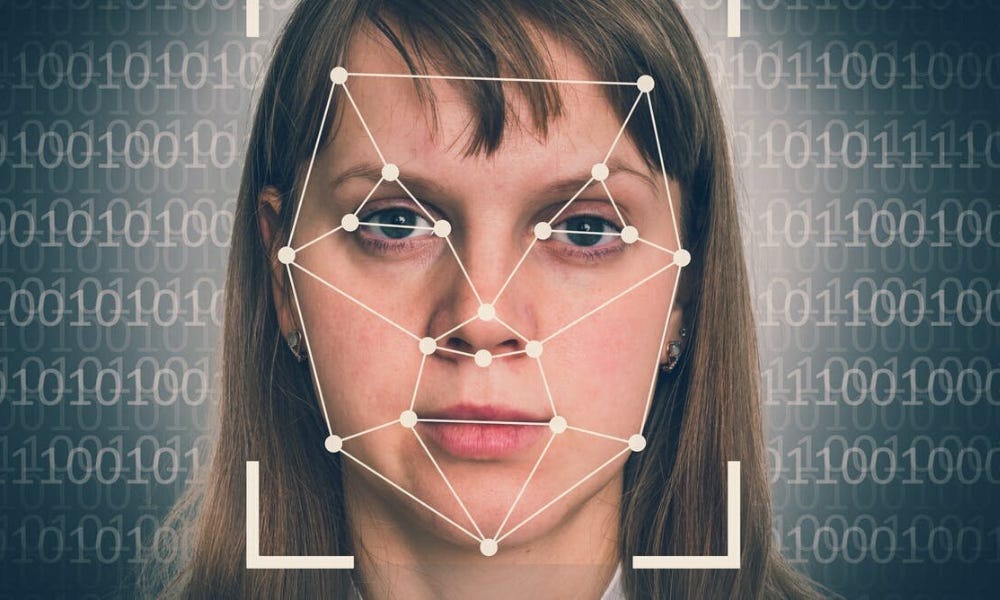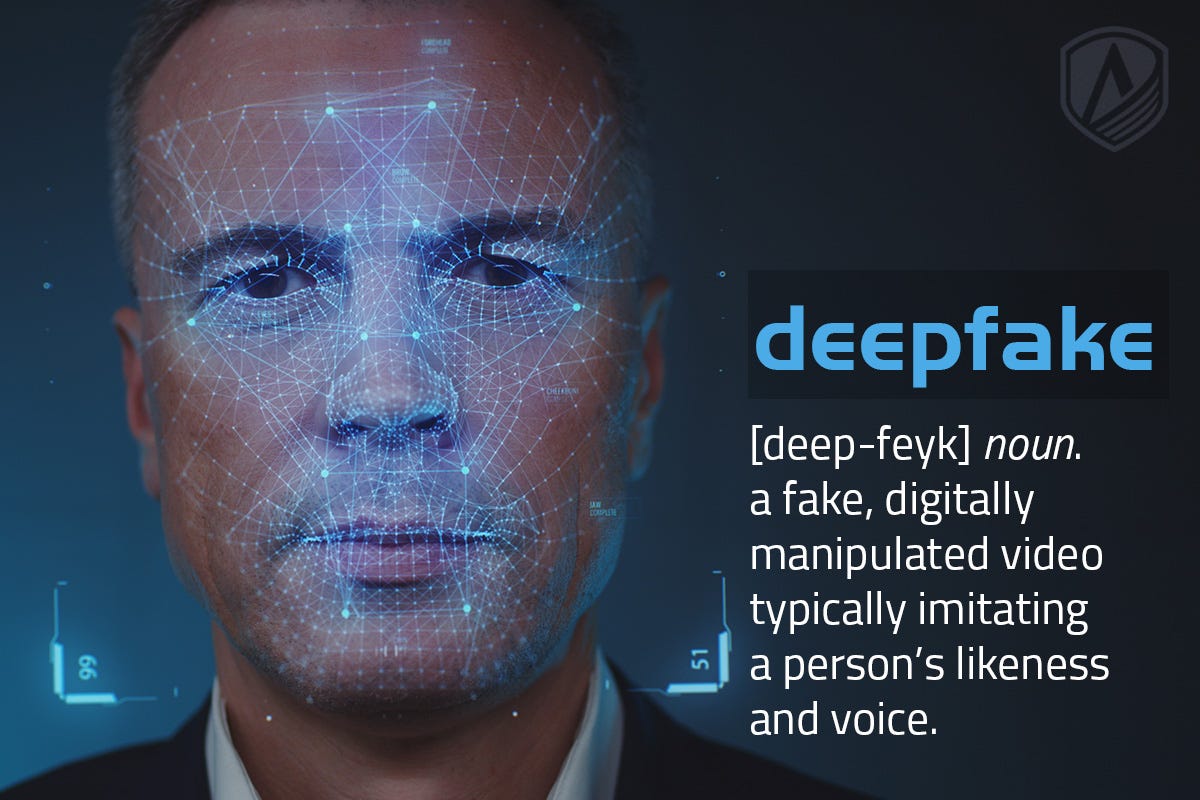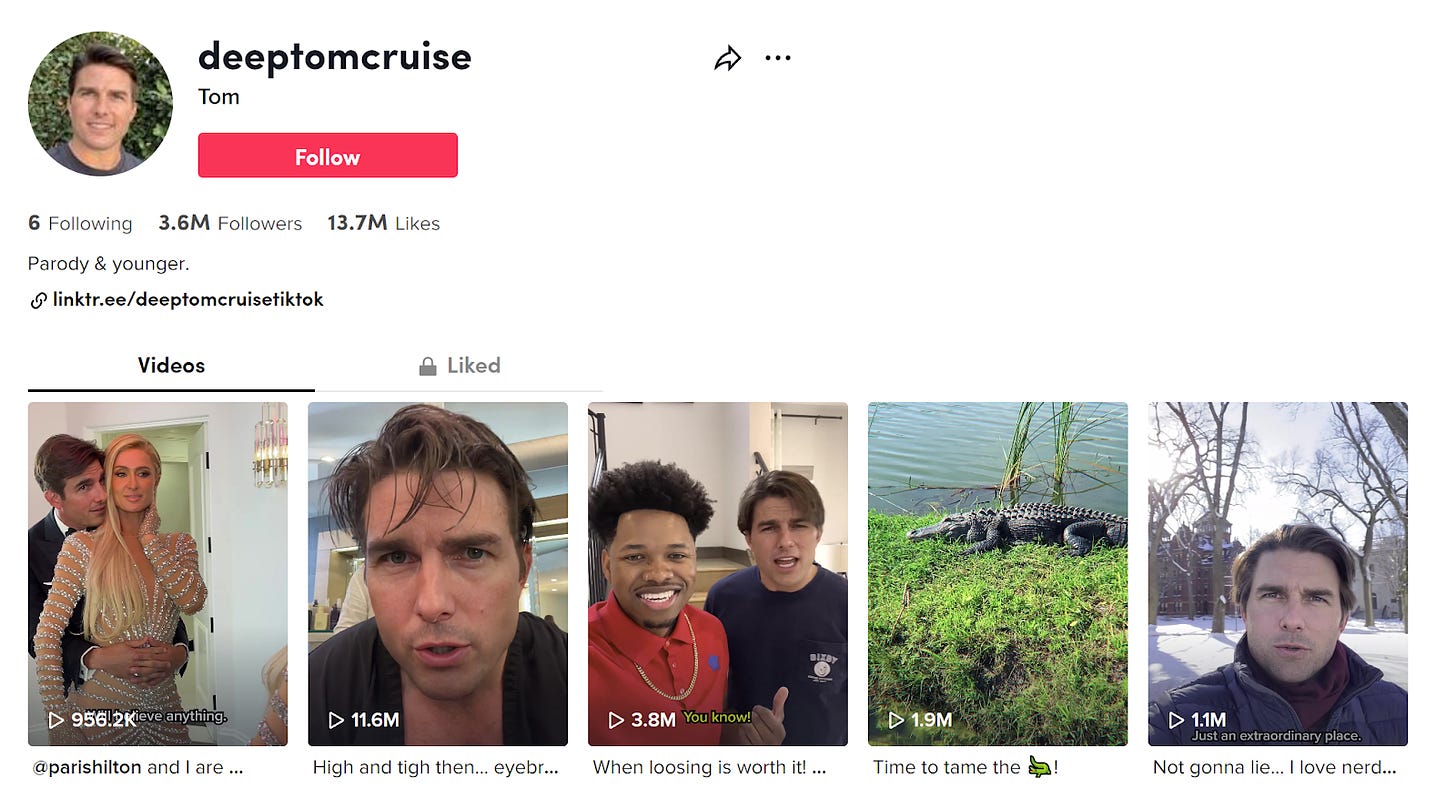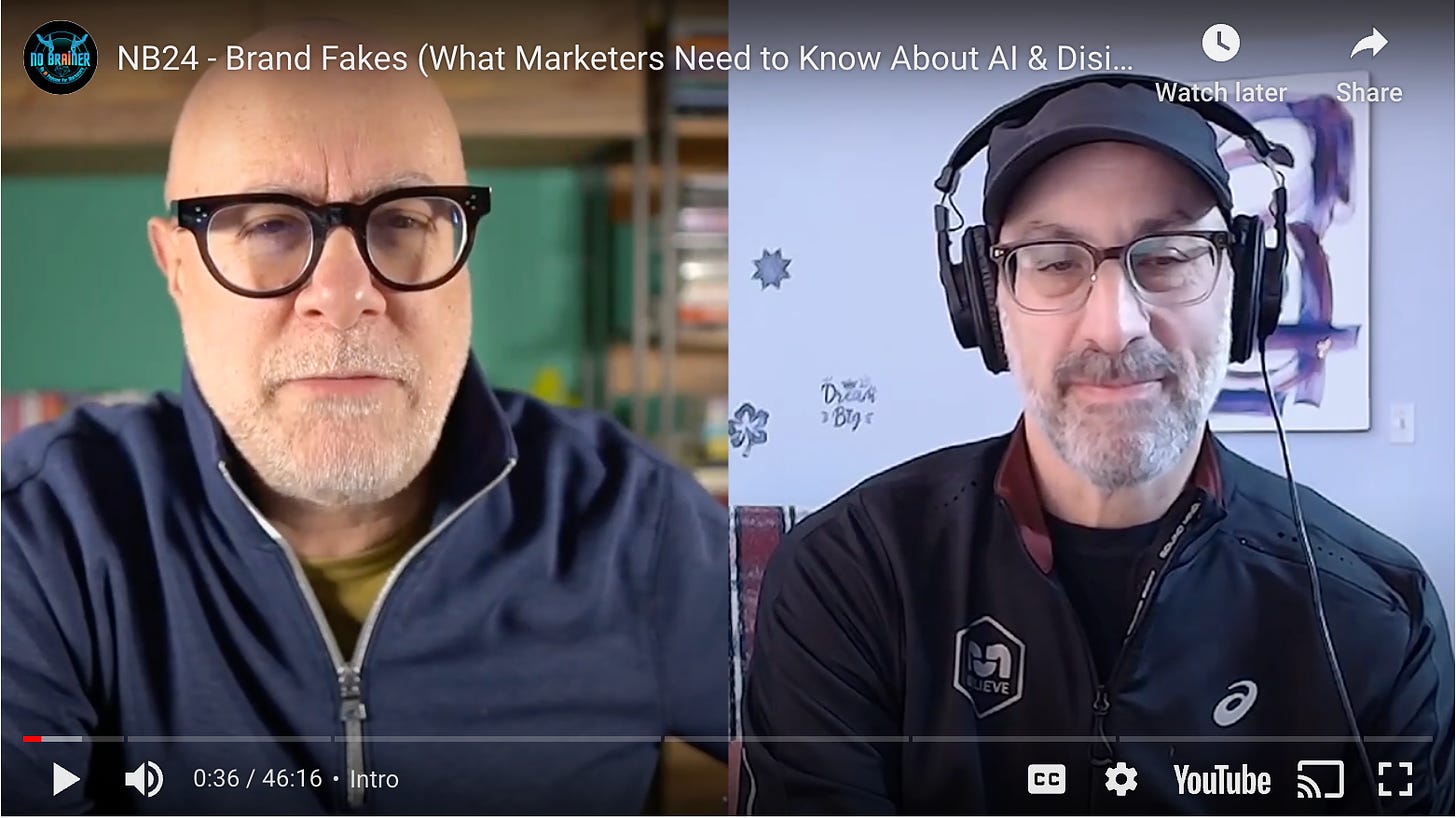Taking a Deep Dive Into the Deepfake Dilemma: Ethical Implications for Marketing
Deepfakes have found their way into many areas of life, including marketing. What are they, how do they work, and what can we do to stint their negative impact?

No doubt you've heard the term "deepfake" by now, thanks to the Taylor Swift explicit images debacle. Of course, that's not the first time Swift has been faked. Another less provocative incident had her hawking Le Creuset pots and pans. And there have been more deep fakes featuring the singer and other celebrities.
Deepfake origins trace back to 2014, with the development of a technology called “Generative Adversarial Networks” (GAN), the technological basis of deepfakes. Since then, the increasing accessibility and sophistication of AI tools have made it easier for brands and individuals to create convincing faux content.
In this issue, we take a deep dive into deepfakes, explaining what they are, how they are being used in marketing, and the ethical implications associated with their use.
What Are Deepfakes?

Deepfakes are artificial images or videos created using a type of machine learning called "deep" learning. (The term "deepfake" is a portmanteau of “deep learning” and “fake.”) This technology uses deep generative methods to manipulate facial appearances and voices and create convincing but entirely fictional content.
The potential for deepfake use in various malicious ways has raised concerns about their impact on people and businesses. As AI technology becomes more accessible and easy to use, individuals and organizations must be aware of the risks associated with deepfakes and take proactive measures to protect against them.
How Do Deepfakes Work?
Deepfakes work using two main algorithms: a generator and a discriminator. The generator builds a training dataset based on the desired output, creating the initial fake digital content. Meanwhile, the discriminator analyzes how realistic or fake the content appears and provides feedback to the generator, which then refines the fake content. This process repeats until the generator creates a highly realistic deepfake.
Deep Concerns About Deepfake Technology
Consumers are increasingly concerned about the sophisticated nature of these scams, as they no longer trust that their senses and experiences are enough to determine whether what they’re seeing or hearing is real or fake. Results from McAfee’s December 2023 Deepfakes Survey revealed the following:
Deepfake Experiences and Perspectives
The vast majority (84%) of Americans express concern over the use of deepfakes in 2024.
68% of Americans are more concerned about deepfakes now than they were one year ago.
Over a third (33%) of Americans said they (16%) or someone they know (17%) have seen or experienced a deepfake scam; this is most prominent for 18 – 34-year-olds (40%).
Top Concerns for Deepfake Usage in 2024
Concerns about the rise in deepfakes influencing elections, undermining public trust in the media (48%), and impersonating public figures (49%) affect more than half (52%) of Americans.
Worries around the proliferation of scams thanks to AI and deepfakes are also considerable (57%).
The use of deepfakes for cyberbullying concerns 44% of Americans, with more than a third (37%) of people showing concern about deepfakes creating sexually explicit content.
Examples of Malicious Uses of Deepfakes
Criminals and malevolent actors have used deepfakes maliciously in various ways, including:
Identity Theft and Fraud
Individuals can use deepfakes to mimic the images and voices of individuals, fooling businesses into granting account access, authorizing purchases, transferring funds, and falsifying government documents such as driver's licenses and passports.
Disinformation Campaigns
Individuals or groups have used deepfake videos of politicians or trusted sources to sway public opinion, create confusion in warfare, and spread fake news. Manipulating a company's stock price is another way to use forged materials.
Blackmail and Extortion
Malicious actors can use deepfake videos to create more powerful extortion and other extortion-related attacks, as well as plant fake evidence. This can have financial, political, and reputational repercussions.
Social Engineering Attacks
Deepfakes can manipulate and social-engineer unsuspecting users into sharing payment or sensitive information.
Positive Examples of Deepfakes in Marketing
Examples of brands using deepfakes in positive ways include:
Educating Consumers
Brands can use deepfake technology to educate customers on how to use a product with a learning curve, creating hyper-personalization, duplicating marketing efforts instantly, and increasing brand loyalty.
Dynamic Campaigns With Influencers
Brands have used deepfakes to create dynamic campaigns with influencers to increase reach and create viral content. Soccer star David Beckham’s 2019 malaria awareness ad is one such example. He speaks nine different languages in the ad.
Market Segmentation and Personalization
In 2018, German online retailer Zalando used deepfake technology to create awareness around its brand by segmenting and personalizing its marketing campaign.
Nostalgic Ad Campaigns
State Farm created a famous example of deepfake technology by superimposing 1998 Sportscenter footage into a modern-day commercial, creating nostalgia with viewers.
Advocacy Campaigns
Dove's Toxic Advice campaign used deepfake technology to raise awareness of the negative impact of beauty advice, demonstrating the potential for using deepfakes in advertising with a positive mission.
Examples of Deepfakes in Celebrity Endorsements
Some examples of deepfakes being used in celebrity endorsements and marketing include:
An AI app cloned Scarlett Johansson’s voice for an ad, which raised concerns about the misuse of deepfakes for celebrity impersonation and fraud.
Tom Cruise deepfake videos on TikTok, where his face was superimposed on someone else's body, demonstrating the potential for using deepfakes for entertainment and viral content.
Taylor Swift's deepfake ads raised awareness of the "deepfake celebrity endorsement" trend and the need for brands to understand the risks associated with generative AI.
AI marketing experts Greg Verdino and Geoff Livingston discuss the marketing implications of deepfakes in an episode of their No Brainer podcast titled “AI Brand Fakes.” Give it a listen.
Ethical Challenges and Consequences of Using Deepfakes in Marketing
Using deepfakes in marketing campaigns presents several ethical challenges and consequences:
Verification and Trust Erosion
As deepfakes become more sophisticated, it becomes increasingly difficult for audiences to distinguish between real and fake content. This can lead to a general erosion of trust, which can be particularly damaging for brands that rely on authenticity and trust as part of their value proposition.
Manipulation and Market Impact
Deepfakes have the potential to manipulate the market and damage reputations, as recognized deepfake videos and sounds can lead to negative publicity, mistrust, and credibility loss.
Misuse for Scams and Fake News
Fraudsters can misuse deepfakes to create fake customer complaints and product reviews, fabricate entire incidents, or create fake news, damaging brand identities and posing risks to consumers.
Regulatory and Legal Risks
As laws and regulations catch up with technology, there may be future legal challenges associated with the use of deepfakes. Companies must navigate an evolving legal landscape and ensure compliance to avoid potential litigation.
Brand Damage
The use of deepfakes in a deceptive or manipulative manner can backfire and severely damage the reputation of a brand, potentially resulting in the loss of customer loyalty and revenue.
Technical Limitations
While deepfake technology is advancing, it still has limitations. Poorly executed deepfakes can be easily spotted and may come across as inauthentic or even comical, which can undermine the intended impact of a marketing campaign.
Resource Intensity
Creating high-quality deepfakes requires significant computational resources and expertise. This can be a barrier for smaller brands or those with limited budgets.
How to Solve the Deepfake Dilemma
Brands and organizations must navigate the ethical landscape of deepfakes responsibly and proactively. That includes upholding ethical standards, implementing mitigation plans, and considering the potential harm and misuse of deepfake technology.
There is also a need to develop ethical use policies and codes of conduct, harm frameworks, and commonsense regulations to address the ethical implications of deepfakes in marketing and beyond.
While deepfake technology offers potential benefits for digital marketing, such as personalized experiences and immersive storytelling, it is essential for businesses to carefully consider the ethical concerns and potential risks associated with its use — and take steps to offset its impact.
Deepfake Marketing News and Views From Around the Web
How Could Deepfakes Change Marketing (Neil Patel)
Deepfake Technology Pros & Cons For Digital Marketing (Search Engine Journal)
Reality check: How deepfake tech is reshaping advertising (The Economic Times)
States turn their attention to regulating AI and deepfakes (NBC News)
That’s it for this issue. See you next week when we share an interview with AI marketing expert Geoff Livingston.
Warm regards,
Paul Chaney, Editor
AI Marketing Ethics Digest
What's your solution to the deepfake dilemma? Leave a comment and let us know your thoughts.







This bit of news fits in very nicely with the topic of this newsletter. Deep faked video conference call leads to $25 million loss. https://www.theverge.com/2024/2/4/24061192/a-company-lost-25-6-million-because-of-a-deepfaked-conference-call